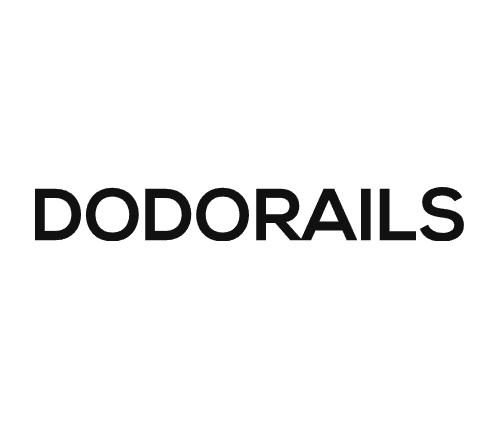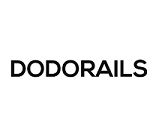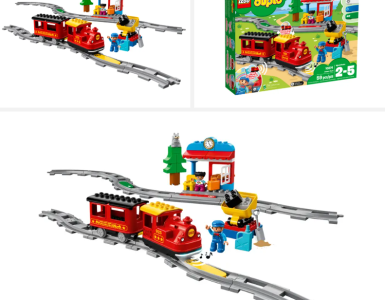Table of Contents
What is a Train Table?
A train table is a specialized play surface designed specifically for toy train sets and railway activities. Unlike playing on the floor, these elevated tables provide a contained, organized space where children can build elaborate track layouts and engage in hours of creative play. Most train tables feature raised edges to keep pieces from scattering, comfortable playing height for children, and often include smart storage solutions for tracks, trains, and accessories.
Train tables have become increasingly popular with families seeking to encourage focused, imaginative play while maintaining household organization. They transform any room into a dedicated play zone, giving children ownership of their own creative space while keeping wooden train sets contained and accessible.

Types of Train Tables
Wooden Train Tables
Wooden train tables represent the classic choice, beloved for their durability and timeless appeal. High-quality wooden tables typically use hardwoods like maple, birch, or oak, offering exceptional stability that can withstand enthusiastic play. The natural wood surface provides an ideal rolling surface for toy trains while maintaining an attractive appearance that complements home décor.
Premium wooden train tables often feature hand-sanded finishes, reinforced joints, and thoughtful design details like rounded corners and smooth edges. While they require more investment upfront, quality wooden tables frequently become family heirlooms, passed down through generations of children.
Plastic Train Tables
Plastic train tables offer practical advantages for modern families, particularly those prioritizing easy maintenance and portability. These lightweight options are typically more affordable than wooden alternatives and often feature molded details, built-in landscapes, or themed decorations that enhance play value.
Modern plastic tables have overcome many early quality concerns, with leading manufacturers using durable, non-toxic materials that resist cracking and fading. They’re completely waterproof, making cleanup effortless, and many models fold for storage or transport.
Train Tables with Storage
Storage-integrated train tables address one of the biggest challenges in train play: organization. These designs incorporate various storage solutions directly into the table structure, keeping collections accessible while maintaining the play area.
Popular storage features include pull-out drawers beneath the playing surface, removable bins that slide into designated spaces, and integrated shelving around the table perimeter. Some advanced models feature hidden compartments or lift-up sections of the playing surface for storing larger items. The best storage designs make cleanup quick and encourage children to maintain organization independently.
DIY Train Tables
DIY train tables appeal to crafty parents wanting customization or budget savings. Building your own table allows perfect sizing for available space, custom storage solutions, and the satisfaction of creating something unique for your child.
Popular DIY approaches range from simple modifications of existing furniture to complete from-scratch builds using detailed plans. IKEA hacks have become particularly popular, with creative parents transforming everything from coffee tables to storage units into functional train tables.
Key Features to Consider
Size & Height
Choosing the right dimensions directly impacts play comfort and possibilities. Standard train tables range from compact 32″×24″ models suitable for small spaces to expansive 48″×32″ surfaces accommodating complex layouts. Consider your available floor space, but also think about typical track configurations your child enjoys building.
Height specifications are equally important for comfortable play. Most train tables target children ages 3-8, with optimal heights ranging from 20-24 inches. Tables too low cause back strain during extended play, while overly tall tables make it difficult for young children to reach center areas. Some manufacturers offer adjustable legs to accommodate growing children.
Durability & Stability
Active play demands robust construction. Quality train tables feature wide, stable bases that prevent tipping or wobbling during enthusiastic play sessions. Check joint construction, ensuring all connections are secure and reinforced appropriately for the table’s size.
Material thickness matters significantly for longevity. Solid wood surfaces should be at least ¾ inch thick, while quality plywood options should use furniture-grade materials with smooth, splinter-free surfaces. Plastic tables should feel substantial, not flimsy, with reinforced stress points.

Safety Features
Safety considerations extend beyond basic stability. Rounded edges prevent injuries during active play, while raised lips (typically 1-2 inches high) contain small pieces without creating climbing hazards. All hardware should be recessed or covered to prevent snagging.
Surface finishes must be non-toxic and child-safe, particularly important since children often put train pieces in their mouths. Look for water-based, low-VOC finishes that meet or exceed safety standards for children’s furniture.
Storage Options
Effective storage integration transforms train table functionality. Under-table drawers provide organized storage for different piece types, while side-mounted bins keep frequently used items within easy reach. Some designs incorporate vertical storage towers or wall-mounted components to maximize organization without increasing floor footprint.
Consider how storage capacity matches your current collection and potential growth. Train collections tend to expand over time, so adequate storage prevents overflow that defeats the table’s organizational purpose.
Design & Finish
Surface design ranges from plain wood or colored surfaces to elaborate themed landscapes. Plain surfaces offer maximum flexibility for different play scenarios, while themed designs can enhance specific types of imaginative play.
Some tables feature reversible surfaces with different themes on each side, or removable overlays that can be changed seasonally or as interests evolve. Consider your child’s current preferences but also long-term versatility.
Pros and Cons of Train Tables
Advantages
Enhanced Organization: Train tables create dedicated spaces for railroad activities, dramatically reducing scattered pieces throughout the house while encouraging more focused play sessions.
Improved Play Quality: The contained surface encourages children to think more carefully about track layouts and scene creation, often resulting in more elaborate and sustained play than floor-based activities.
Social Benefits: The communal nature of table play naturally facilitates cooperation, sharing, and collaborative problem-solving among siblings and friends.
Multi-Generational Appeal: Adults can comfortably participate in play without floor sitting, creating more opportunities for shared family activities and bonding.
Layout Preservation: Children can leave complex constructions intact between play sessions, enabling ambitious long-term projects and ongoing storytelling.
Drawbacks
Space Requirements: Train tables demand significant floor space and represent permanent or semi-permanent room fixtures that may not suit all living situations or frequently changing room layouts.
Investment Considerations: Quality train tables represent substantial investments, often costing $200-500, plus potential assembly time and ongoing maintenance requirements.
Growth Limitations: Most train tables are optimized for specific age ranges and may lose appeal as children mature or develop different interests.
Layout Constraints: Unlike floor play, train tables limit layout possibilities to the table’s dimensions, potentially restricting very large or unusual track configurations that some children prefer.
Creative Uses Beyond Trains
Building Blocks & Legos
The smooth, contained surface makes train tables excellent for LEGO Train Sets. The raised edges prevent pieces from falling, while built-in storage can organize different brick colors and specialty pieces. Many families find train tables perfect for large LEGO city layouts or complex architectural projects.
Puzzles & Arts and Crafts
Train tables excel as puzzle workstations, providing adequate workspace for large puzzles while preventing pieces from scattering. The comfortable height reduces neck strain during extended puzzle sessions, and good lighting enhances the experience.
For arts and crafts, the contained surface protects floors from spills while providing ample workspace. Storage areas can organize art supplies, and the easy-clean surfaces handle inevitable craft messes.
Imaginative Play
Beyond trains, these tables work wonderfully for car play, dollhouse activities, farm scenes, or any small-scale imaginative play. The defined boundaries help children create focused play environments while built-in storage keeps themed accessories organized.
Multi-purpose Furniture
Many train tables serve double duty as general play tables, homework stations, or even dining surfaces for children. Convertible designs with removable or flip-up sections maximize versatility while preserving specialized train features when needed.
DIY and Customization Options
How to Build Your Own Train Table
Building a basic train table requires moderate woodworking skills and common tools. Start with a simple rectangular frame using 2×4 lumber, then attach a plywood surface (¾ inch recommended). Add 2-inch strips around the perimeter to create raised edges, and finish with child-safe paint or stain.
Essential tools include a saw, drill, screws, sandpaper, and measuring tools. Total material costs typically range from $75-150 depending on wood choice and finish preferences. Allow a weekend for construction and finishing.
Popular DIY Hacks
IKEA hacks offer budget-friendly alternatives with surprising functionality. The TROFAST storage system can be topped with custom plywood surfaces for integrated storage and play areas. LACK coffee tables can be modified with raised edges and storage additions for under-$50 solutions.
Other popular hacks include converting dining tables with removable tops, creating fold-down wall-mounted tables for small spaces, or building modular sections that can be reconfigured as needed.
Customization Ideas
Personal touches make train tables special. Chalkboard paint surfaces allow children to draw roads, landscapes, or track plans directly on the table. Themed paint jobs can create cityscapes, farmlands, or fantasy environments.
Advanced customizations include built-in lighting, sound effects, or even simple automation for special track sections. These additions require more technical skill but can create truly magical play experiences.
Buying Guide
Budget Considerations
Entry-level train tables start around $100-150, offering basic functionality without premium features. Mid-range options ($200-350) typically include better construction, integrated storage, and improved aesthetics. Premium tables ($400+) feature exceptional materials, elaborate storage systems, and often themed designs or special features.
Consider cost-per-year-of-use rather than just initial price. A $300 table used heavily for five years provides excellent value compared to cheaper options that break or prove inadequate quickly.
Where to Buy
Toy stores offer hands-on evaluation but limited selection. Furniture retailers sometimes carry train tables in children’s sections with better construction quality. Online marketplaces provide the widest selection and competitive pricing, though shipping costs for large items can be significant.
Consider local craftspeople for custom builds that perfectly match your needs and space constraints. Many woodworkers enjoy creating specialized children’s furniture and can incorporate specific features or dimensions.
What to Prioritize
Prioritize safety and stability over appearance or novelty features. A wobbling table becomes dangerous quickly, while inadequate edge protection leads to constant piece retrieval.
Storage capacity should match your collection size and growth plans. Tables with insufficient storage create organization problems that defeat their primary purpose.
Maintenance Tips
Wooden tables benefit from periodic cleaning with appropriate wood-care products and occasional refinishing to maintain appearance. Avoid excessive moisture and protect from direct sunlight to prevent warping or fading.
Plastic tables require minimal maintenance but benefit from regular cleaning and inspection of moving parts like drawers or folding mechanisms. Replace worn components promptly to maintain safety and functionality.
Frequently Asked Questions
Is a train table worth it?
Train tables provide excellent value for families with children who actively play with trains and have adequate space. They’re particularly worthwhile if train play represents a major interest and your current setup involves frequent setup and cleanup of floor layouts. However, families with limited space or children who prefer varied activities might find better value in multi-purpose solutions.
What age is best for a train table?
Most train tables work best for children ages 3-8, though this varies with individual development and interests. Younger children (18 months-3 years) can enjoy simple train play but may not fully utilize complex layouts or storage features. Older children often maintain interest longer with tables that accommodate elaborate constructions.
Should tracks be glued or loose?
Loose tracks offer maximum flexibility and creativity, allowing children to reconfigure layouts frequently. This approach encourages problem-solving and keeps play fresh. Fixed tracks provide stability for younger children but limit long-term play value. Most experts recommend loose tracks with good-quality connections that stay together during play but separate easily for reconfiguration.
How big should a train table be?
Size depends on available space and play preferences. Minimum effective size is about 32″×24″ for basic layouts, while 48″×32″ or larger accommodates elaborate constructions. Consider that children need to reach all areas comfortably – tables wider than 30 inches may create inaccessible center zones unless designed for multi-sided access.
Can I use it for other toys?
Absolutely! Train tables excel for LEGOs, puzzles, arts and crafts, and various imaginative play activities. The contained surface and storage make them versatile play stations that adapt to changing interests. This versatility often extends their useful life well beyond train-focused play.
Conclusion
Train tables offer compelling benefits for families seeking to enhance children’s play experiences while maintaining household organization. The key to satisfaction lies in carefully matching table features to your specific needs, available space, and play patterns.
For most families, mid-range options from established manufacturers provide the best balance of quality, features, and value. These typically include adequate storage, proven safety records, and durability that justifies the investment.
DIY enthusiasts can achieve excellent results with custom builds, particularly when specific size requirements or unique storage needs aren’t met by commercial options. IKEA hacks provide accessible entry points for families wanting customization without extensive woodworking.
Whether you choose to buy or build, prioritize safety, durability, and functionality over appearance. The best train table encourages regular use, grows with your child’s abilities, and integrates seamlessly into family routines.
Ready to enhance your child’s play experience? Measure your space, assess your budget, and involve your child in choosing features that match their interests. A well-chosen train table can provide years of creative play and learning opportunities while keeping your home organized and your child engaged.











Add comment